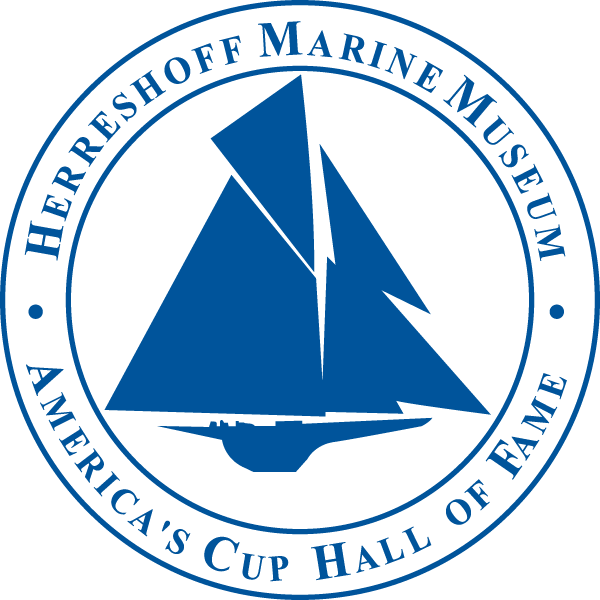
By Wendy Popp-Simmons,
Allegro S20
Editor’s note: This is the fifth article in a series we’re publishing throughout 2021, showcasing iconic Herreshoff fleets and their owners as important stewards of Herreshoff boats, originals and replicas alike. Our friends at the Herreshoff Marine Museum in Bristol, RI are celebrating their Golden Jubilee year – the 50th anniversary of the museum’s founding, and WindCheck is honored to be the official Jubilee Media Partner.
The Herreshoff Marine Museum is located on the grounds of the former Herreshoff Manufacturing Company where more than 2,000 yachts were built over more than six decades, including eight consecutive America’s Cup defenses between 1893 and 1934. The Herreshoff Jubilee encompasses a yearlong calendar of fresh content and compelling events (both virtual and in-person, COVID-permitting). To learn more, log onto herreshoff.org.
“Everything should be made as simple as possible, but no simpler. – Attributed to Albert Einstein, circa 1920
Currently, much is being written about the brilliant design and aesthetic of Nathanael Herreshoff’s S Boat. For the skippers and crews of the Western Long Island Sound Herreshoff S Class Association (WLISHSCA), the affection and esteem carries into this 2021 season in the wake of an auspicious Centennial Anniversary for this one-design.
`In the summer of 2019, twenty-five of the Bristol-born vessels competed in various assemblies during three Centennial Regattas in Larchmont, NY and Newport and Bristol, RI. On the second week of July, eight northern sisters arrived in Larchmont by way of the sea and by trailer, convening for the first Centennial event amidst six of their southern family from Larchmont, plus one from Virginia. All arrived in Bristol Fashion, poised for the first 100th Anniversary event, which was hosted by Larchmont Yacht Club.
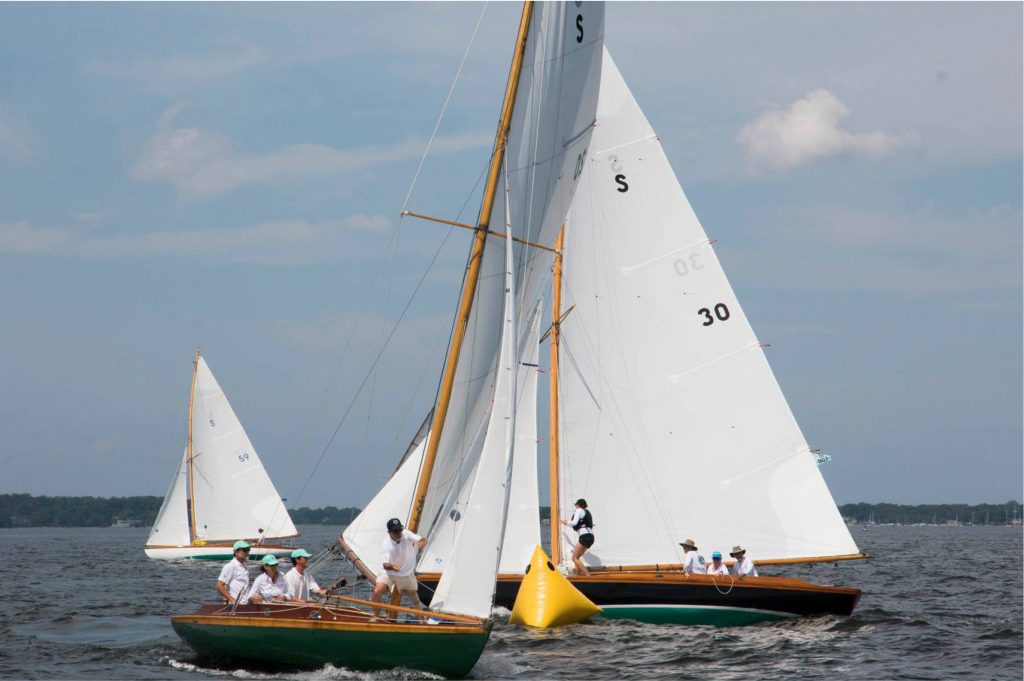
Allegro rounds a mark during the inaugural S Class Centennial Regatta, with Vindex in pursuit. © Emily Ferguson
`The highlight of the sailing season could arguably be the summer convergence of vessels for Larchmont Race Week. The annual festivities are extraordinary, and their welcome of the S Class fleets was exceptional. Not since Larchmont Race Week in 1947 had there been such a communing of this class on the waters of Western Long Island Sound. Fifteen S Boats coursed across the horizon, each trimmed to fill a captivating 340 square feet of mainsail with temperate Long Island Sound breezes. These wings are distinctive as they are usually trimmed for performance behind a 42-foot, gently curved Sitka spruce mast. The appearance is a striking triangular banner of canvas, the foot of which extends nearly eighteen feet along a formidable boom.
`Spectators watched the spoon bows carve into gentle waves while the fleet traversed New York waters. To the south, a crisp silhouette of New York City formed a distinguished backdrop. Each boat arrived to cheers from the crews of her sisters on an incandescent July morning. As greetings became punctuated by the familiar exclamation, “Backstay!” crews snapped out of their pleasant distraction to correct the significant and idiosyncratic feature of this craft.
On approach, one could appreciate the signature classic sheer strakes, newly varnished and gleaming. Grins of recognition between old friends, wry smiles creasing the crows’ feet of sun-weathered faces; skippers, crew, and family, full of anticipation and generating palpable warmth. Celebratory caps in turquoise were raised in salute as Surprise, Vindex, Pirate and Mischief from Narragansett Bay joined Teaticket, Coyote and Radiant from Quissett, Allegro, Phoenix, Kandahar II, Dilemma, Ingwe and Iroquois from Western Long Island Sound, and Dolcefariente from Virginia, their crews enthusiastically marking this historic occasion.
Were it not for the combined effort of three commodores, Bill Simmons of WLISHSCA, Fred Roy of the Narragansett Bay Herreshoff S Class Association, and Doug Cooper of the Quissett Yacht Club S Class Association accompanied by scores of volunteer crew, fellow skippers and devoted shipwrights, the culmination of this highly anticipated vision could not have been realized. The effort was stalwart; the support and camaraderie incomparable. It was truly a season of passion and joy for the whole of the S Class community. Ironically, this was an event never fully anticipated by the boats’ designer, the “Wizard of Bristol.”
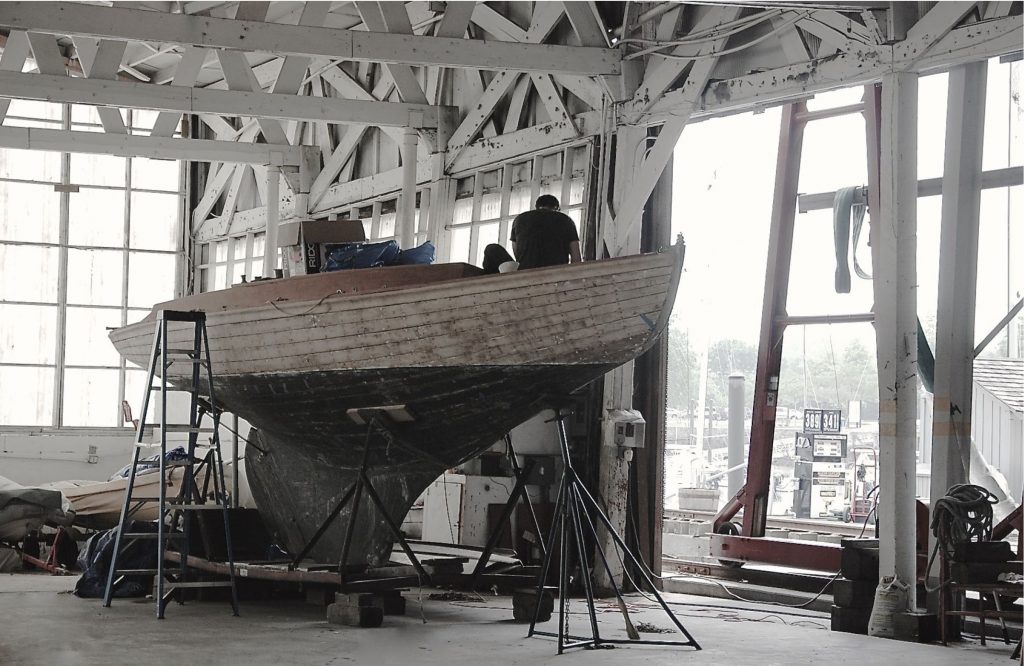
Wistful was lovingly by skipper Pierre Pascal Bardoux and renamed Ingwe.
Captain Nat Herreshoff carved the S boat half model in November 1919. On December 17, 1919, the very first order for an S Class One Design was placed by Paul Hammond of Seawanhaka Corinthian Yacht Club in Oyster Bay, NY. Hammond will never know how prescient his request would be!
One could infer that the first S Boat to arrive, Spinster (Hull 830), was indeed the comfortable solution between cruising and racing for a daysailer that Hammond had anticipated. Apparently, the design was successful enough to have a total of eighteen racing in Marblehead and Seawanahaka fleets by 1920. A series was instituted for women, wives, and daughters of the S Class in 1922. Thus began a tradition of these boats being owned and raced by subsequent generations in sailing families and the beginnings of the legacy of what many now consider the epitome of one-design racing.
The WLISHCA has a number of such family ownerships. It is this author’s impression that this fact is integral to the enduring appeal of this craft. The owners themselves are no less charismatic, with traits that mirror the vessel. Many are understated craftsmen, makers, architects, builders, or artists. Others are musicians, archivists, and people with a keen appreciation for a beautifully turned piece of wood and cast bronze hardware. With a love of precision and simplicity, they are quite meticulous, intuitive, resourceful, and often irrepressible.
When you take in the culture of the Herreshoff S Boat, you cannot help but admire the touch of warmth, tradition, and a style that cannot be duplicated in any other way other than by hand. If you doubt that “it is true of every art that you cannot acquire what you have not felt,” then a daysail on an S Boat might convince you.
The care is daunting in early spring but is met with deep satisfaction when the crews and family faces are mirrored in a beautifully painted hull. Each season brings on the prepping in the company of other such enthusiasts and eccentrics and of course those skeptics who do not see the functionality of wood in a boat until of course, they witness an S Boat being launched; a beautiful sight to behold. Each spring for many decades, Brewer Post Road Boat Yard in Mamaroneck, NY where all of the local S Boats await their annual polish, takes on an air of camaraderie rivaling what takes place on the water.
The owners, family, and crew do not shy from the tasks and exceptional demands of wooden boat ownership. Everyone anticipates seeing each other, working, learning together, and preserving these vintage crafts with a tenderness that is almost tribal. This author witnessed firsthand the entire restoration of the former Wistful by skipper Pierre Pascal Bardoux, who singlehandedly stripped her to her bones, rebuilt, replaced, and lovingly restored every inch of her over the course of a single season in 2015, renaming her Ingwe. He devoted three winters to further honing.
This is not to suggest that these characters are not competitive. The competition increases each year as crews gain skill and the discipline creates choreography and accuracy. When the breezes warm and fill in, these teams are enamored as the keel digs into its favorite groove, the balance settles just right with the tiller responding to the most delicate touch, and the boat finds its sweet spot.
S Boat crews have sufficient patience for the ginger curling of a spinnaker to capture the desperate breath of August. Perhaps they have actually been a human whisker pole, supporting a wing-and-wing push for the finish line. All can humbly reflect on admirable power, performance and resilience of these classic craft during a squall. There is even a certain joy and Zen quality to paddling in dead calm. All will come back for more.
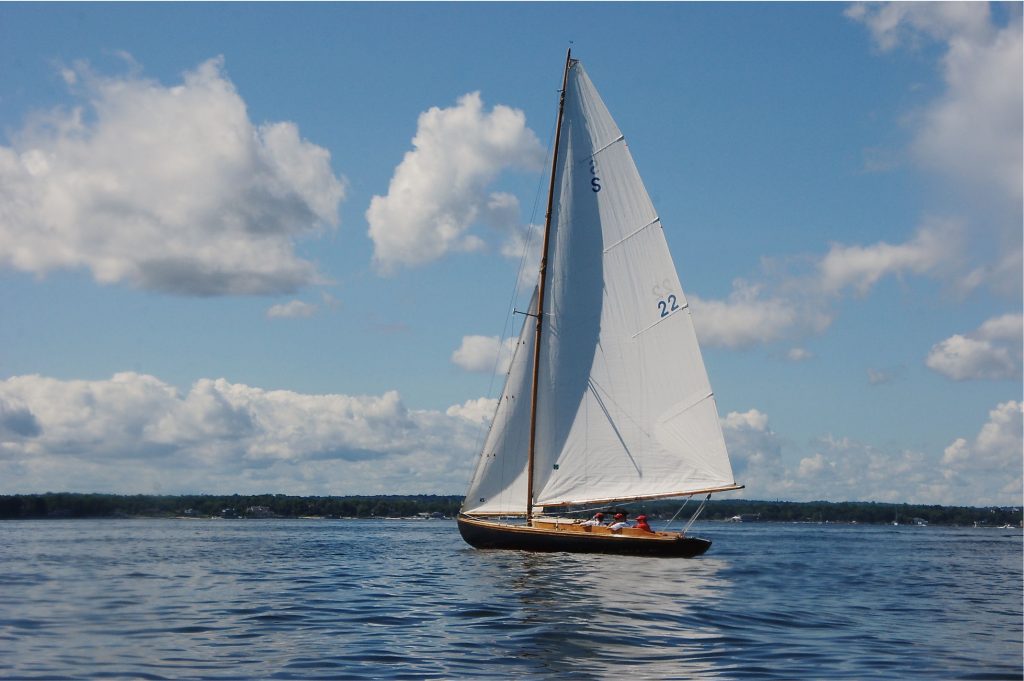
The crew of Bob Mehlich’s Kandahar II waits for breeze during the S Class Centennial Regatta at Larchmont Yacht Club.
Bob Mehlich, who skippers Kandahar II, reflects that the most alluring factors for his forty-three years of stewardship are “the camaraderie of the people I met plus the overall beauty and comfort of the S Boat.” Among our most accomplished skippers, Bob served as WLISHCA Commodore for nearly a decade. He and his brother-in-law Rick Beck, the skipper of Iroquois, have competed and raced together out of Larchmont Yacht Club for four decades.
“I started crewing for Jean Ricker on Kandahar 1 (sail #16) in 1976, the same year I joined Larchmont Yacht Club,’ Bob continues. “I crewed for Jean for two years. In 1978, I chartered Kandahar and in 1979 I bought her. In 1980, she broke her mooring in a storm and she was destroyed. I bought Kandahar II (then called Rabar) and have owned her ever since.”
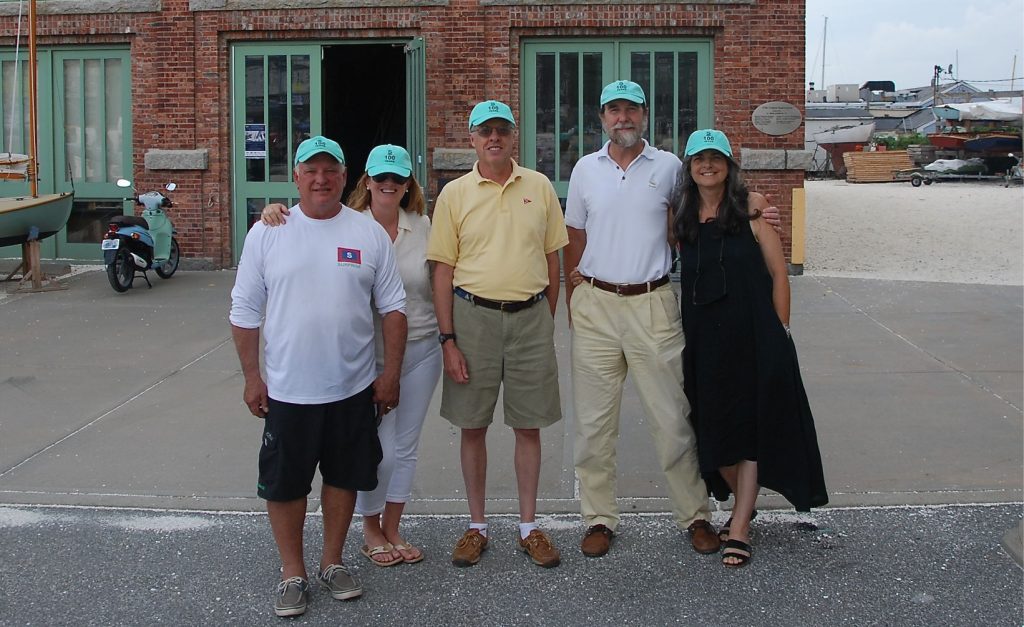
Pictured at the IYRS School of Technology & Trades in Newport, RI where they met to plan the S Class Centennial are (l r) Commodore Fred Roy, Nancy Roy, Commodore Doug Cooper, Commodore Bill Simmons, and author Wendy Popp-Simmons.
Bob has experienced some of the more harrowing blows. Despite two dismastings and two storms that lifted his boats from their moorings, Mehlich and his first mate and son Robbie persist. “When I first started skippering the boat in 1978, we got hit by a storm during a race,” he recalls. “It blew so hard and rained so hard that visibility was a couple feet. I headed into what I thought was the harbor, but left both my sails up. I was unable to come about as the boom was in the water. Needless to say, we were headed for the breakwater. Somehow, I was able to get the boat to come about at the last minute before hitting the rocks. Of course, I did not have the sails properly trimmed due to my inexperience…and my crew was as green as the color of the sky that day!”
Any sailor would appreciate the immediate grace in the turn that an S Boat makes around a mark! The keel is composed of 3,350 pounds of lead, making the boat exceptionally fast. The motion is breathtaking in a close rounding. But it is the S Boat owner who looks up, while sanding and smoothing the surface of the keel, to admire its curvature and sculptural beauty. One imagines Captain Nathanael Greene Herreshoff and his brother John Brown Herreshoff conjuring those dimensions over a century ago, the half hull in their hands, taking full measure of the performance through its shape and feel.
Captain Nat’s meticulous design studio is beautifully preserved at the Herreshoff Marine Museum in Bristol. When viewing the vast collection of half hulls on the walls, a quote attributed to da Vinci might come to mind: “Where the spirit does not work with the hand, there is no art.”
Captain Nat’s son, L. Francis Herreshoff, once stated that there have been few all-around better boats for afternoon sailing, cruising and racing than the S Class, also noting they were also the last one-design class that was somewhat comfortable, and perhaps the most interesting design developed in 1919, amidst all of the innovation going on at that time.
The roster of owners and the length of its legacy have established that this vessel is perhaps the most successful of Herreshoff’s One Designs, while we also recognize the enduring Herreshoff 12 ½. During a recent exhibition at the MIT Museum called Lighter, Stronger, Faster: The Herreshoff Legacy, the S Class was exceptionally noted and celebrated.
Many of the clubs on Long Island Sound have embraced the design. American Yacht Club in Rye, NY boasted fourteen S Boats through the thoughtful acquisitions made by Dr. James Benfield. The first year that they were noted to race was in 1939. The racing roster peaked at thirty-four boats. Were it not for a world war and a savage fire in 1958, their numbers would have profoundly increased. Despite those setbacks, a racing fleet managed to persevere. Many of the original skippers have owned and raced their boats for decades through extremely challenging times.
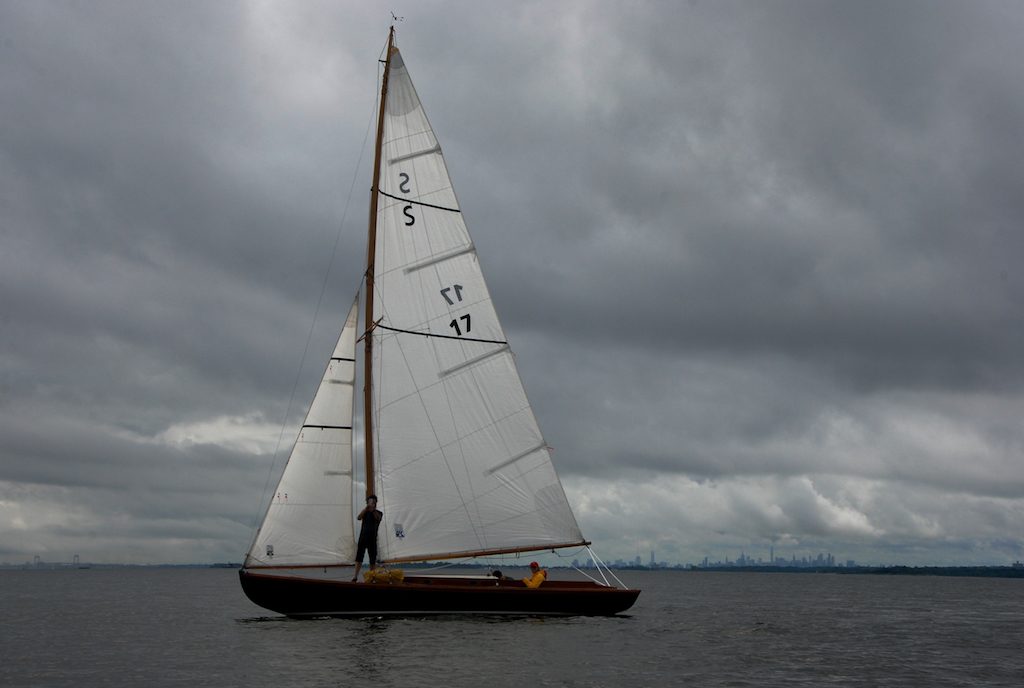
The combined S Class Associations had the opportunity to celebrate one of WLISHCA’s more venerate members; class archivist and intrepid competitor, the late George Hanson. Hanson was distinguished by his induction into the Herreshoff S Class Hall of Fame. Throughout his nearly sixty-four years of skippering Phoenix, it was his encouragement and role of fostering a number of abandoned S Boats and his personal sense of duty to enlist new owners have helped sustain the WLISHCA as we know it today. His son and daughter-in-law, Eric Hanson and Daniele Rudi, will now share the helm and continue his legacy when Phoenix splashes this year.
The Western Long Island Sound Herreshoff S Class Association has the honor of having cultivated a number of the S Class Hall of Fame Honorees. The fleet trophies bear the names of highly celebrated skippers of such crew and families that are etched in silver dating back to 1950.
John Judge sailed Celebrity through the 1950s and ’60s to achieve his distinguished position. He and George Hanson accepted this honor on the deck of Horseshoe Harbor Yacht Club in Larchmont, NY, where Phoenix has moored since 1956. Horseshoe Harbor is home to four S Boats.
Brian Kelly is rumored to have singlehandedly raced the winning Eaglet, S57 on a number of occasions over the decades that he sailed into his notoriety. He was inducted posthumously in 2011.
The current owners of Eaglet are Kirsty Scott and Adrian McKimmey. Scott recently reflected, “George Hanson introduced us to the S boat when we first became members of HHYC in 2006. We bought her from Brian Kelly’s nephew, Sean Daly in September 2008. George Hanson brokered the deal. We sailed up to Seawanhaka Corinthian Yacht Club, where Eaglet was originally commissioned. It was a beautiful sail up there, but we were anxious to make it before dark. We had no idea where to find our guest mooring, but Eaglet seemed to know the way. The sun had gone down, it was hushed and the wind had quieted. We dropped the sail and she glided up to a mooring as if we had nothing to do with it. She had returned home. It all felt effortless and magical. When we had dinner in the clubhouse that evening, we saw photos of Eaglet (with her previous owner Brian Kelly on board) and a photo of one of the only female S boat skippers from the 1930s.”
Another captain of Eaglet and an earlier inductee was Matty Burgraff; Eaglet and Burgraff’s name adorn the first place etchings on WLISHCA’s Burgraff trophy consistently throughout the history of the fleet.
Howard Howard, devoted skipper and owner of the highly awarded Allegro S20 since 1967, partnered for eighteen years with Commodore Bill Simmons. Howard was inducted into the Hall of Fame during the 2019 festivities. It was Howard and Simmons who introduced this author to the language of the S Boat, and have since helped to wean first mate and foredeck crew Wynn Simmons into the art of seamanship.
The award to Howard was presented on Saturday, August 17, 2019 at the Centennial Events at Sail Newport. Howard has been a devoted steward of Allegro for 54 years.
Indeed, it is a curious fact that Narragansett Bay’s own Commodore Fred Roy mentioned that he “cut his teeth” on WLISHSCA’s Danae, owned by Bill Riley, racing the waters of Long Island Sound!
Six of WLISCA’s skippers had celebrated the 75th anniversary of these stalwart crafts together and were thrilled to toast and roast each other during the highly anticipated 100th year.
Dilemma S59 is now owned by Sean Park, who was introduced to sailing when his father held the helm of Hornpipe. Sean had since been the Commodore of the WLISHSCA fleet for a few years and had taken on the role of savior to abandoned vessels to help enlist new S Class family members during his stead.
The use of the word “family” is not used loosely here.
Commodore Simmons reflects, “When my eldest child, my daughter Zoe, was in grade school, there was a class project in which I participated. I was asked to make an image of a goal of mine. I made a little colored drawing of Zoe and myself in a sailboat heading toward shore and my wife holding a baby boy.”
“I often reflect on the fact that everything in that dream came true and still love those times when my family, or any part thereof, is on board our Allegro. The baby in my dream, my son who is now grown, has taken to sailing in a large way and holds a special affinity for the precious heritage these beautiful little yachts, the S Boats, represent. He and my wife, Wendy, have been my most steady and reliable crew which has led to great success in our local fleet racing over the years. Allegro has been a family binder. Of all the joys she has provided due to her elegance, power, comfort, and access to our Long Island Sound, her role as a family binder is what I hold most dear.”
Dilemma’s first mate Shane C. Parouse wrote, “I was first introduced to the S Class by Jim Park, owner of Hornpipe, in the mid-‘80s. I was a teenage friend of his sons Lorne and Sean and invited out to help ‘crew’ on the boat for a race. Jim kept his boat in Hempstead Harbor, sitting on a mooring by a dreadfully dangerous rock that was submerged at high tide. We got out to Hornpipe in a dinghy that was stored onshore and had to be carried down to the beach, flipped over, boarded without incident, and rowed out to the boat.
“I sailed like this a handful of times with Jim, missing my backstays (the only task I was trusted with), and riding along completely confused about what was going on. But somehow I was hooked anyway. I remember sitting on the lawn at Larchmont Yacht Club after a Race Week day, eating burgers and ice cream. As a kid from Brooklyn who was once on food stamps, you can rest assured I had never been to a yacht club before, but of course, the beauty of the setting is vivid in my mind to this day. Jim, Lorne, and Hornpipe opened up a new world to me.
“I also remember a long ride home one day, in the fog, when we narrowly avoided running into the Hempstead Harbor breakwater only because we could hear waves crashing into it!
I didn’t sail again for fifteen years, until after 9/11, when I needed a distraction from the realities of the world and took my ASA 101 course at New York Sailing School in New Rochelle. Within a few years, I was reconnected with Sean Park, who had returned to New York and was looking to crew up on Alex von Bidder’s Dilemma.
“The rest is history, as we’ve sailed together for fifteen years now. At first we were horrible, but with a competitive drive and eagerness to learn, we won championships, caught an anchor on deck from a leisure boat on the course, competed in the 100th Anniversary regatta, and had an absurd number of good laughs.
“Sailing, the S Boat, and the experiences and friends I have made throughout the years has been one of the great pleasures of my life, and my family now has a boat of our own. It’s given me access to a pastime we will continue to enjoy for many years to come.”
Since the whole of this reflection was asked to be specific to Western Long Island Sound and its current fleet, it would be remiss to speak of the Centennial and the fleet without mentioning how synonymous the character of the skippers, crew, and families are with these craft. It truly is as if the boat has chosen them. When at the helm, there is a fluid connection between the skippers and their boats. It is beautiful to witness a knowledgeable sailor take hold and watch their face soften into a blissful thoughtfulness while they guide this powerful rig with a weightless touch.
When asked about his memorable and most harrowing experiences on Danae, venerate WLISHCA skipper Bill Riley recalls, “I loved sailing my wooden 14-foot Old Town White Cap on Candlewood Lake until Danae and Long Island Sound directed my life. Racing with family and all the wonderful friends and sailors we have met over the last forty-seven years has been a blessing. The memories are too numerous to count. The most harrowing experience has been buying the S Boat in the first place.”
Allegro S20, Phoenix S10, Kandahar II S22, Dilemma S59, Ingwe S6, Danae S68 and Iroquois S17 are making ready to sail this spring season. The entire class performed in outstanding fashion on their 100th birthday. WLISHCA’s Allegro, skippered by Commodore Bill Simmons, took fourth in the inaugural event in her waters. The fleet from Narragansett Bay dominated the series, with Vindex, skippered by Paul Del Nero, earning the overall win, Pirate, skippered by Bob Patterson, taking second and Surprise, skippered by Commodore Roy, finishing third.
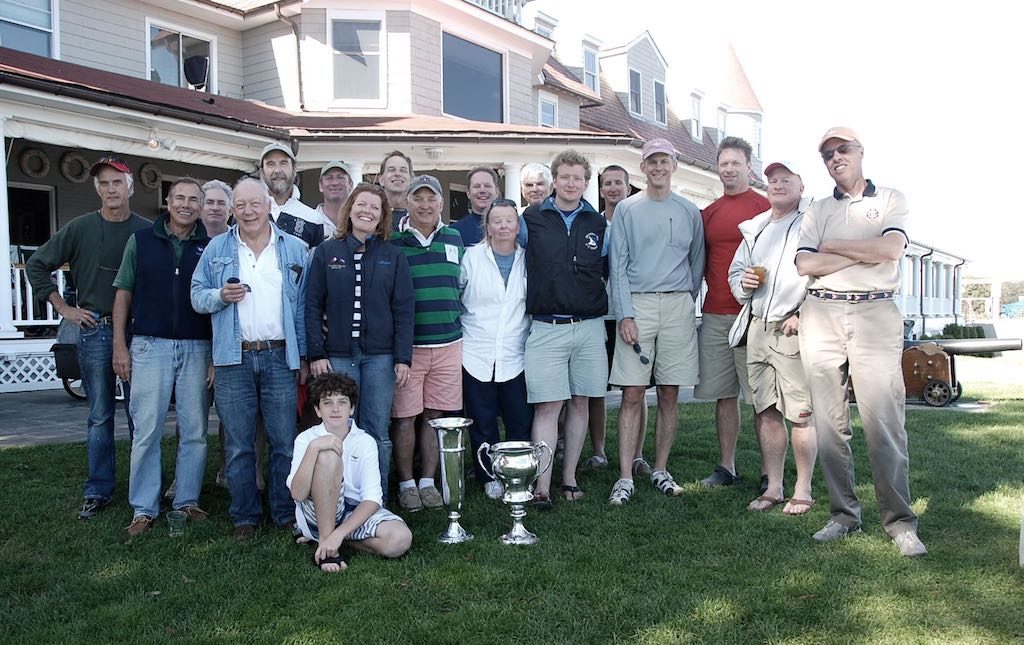
For those devoted to the S Class, there is a wistful acknowledgment of having been part of something greater in the act of shepherding these wonderful vessels forward into this century.
In a recent letter to Commodore Bill Simmons, Halsey C. Herreshoff related that perhaps we do not fully understand that when his grandfather, Captain Nat, designed the S Boats in late 1919, he was quite stressed by illness and overwork preparing Resolute for the 1920 America’s Cup Match. “Nothing seemed to bother his brilliant designs, time after time. Of course, we all know and appreciate the fantastic proportions of the S Boats for brilliant sailing in light or strong breezes. But equally significant is his innovative rig, just at the threshold of what was then termed the ‘Leg-O-Mutton rig.’
“My Father, Sid Herreshoff, was the first to ever test sail an S Boat, in winter 1920. He told me that his father reasoned the curved mast, so simply and brilliantly built by the Herreshoff shop, was to provide additional sail support replacing that of previous gaff-riggers, so S Boats were clearly significant steps forward in his rapid replacement of gaff rigs.” Halsey Herreshoff finished by stating that he didn’t believe his grandfather ever expected that so many others would continue the “eager and brilliant racing” of these boats a century hence.
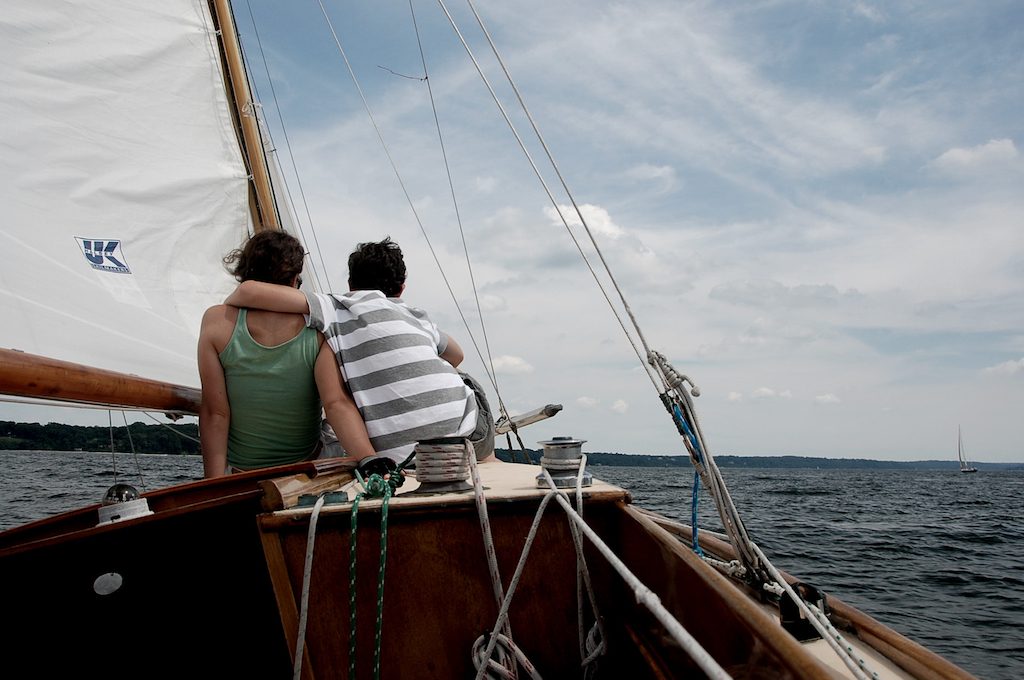
This crewmember would like to think that the birth of the S Class One Design was a by-product of that profound effort put forth during Nat Herreshoff’s flow state during such a stressful time. Working on the complexity of the extraordinary Resolute spawned the brilliance of simplicity and powerful design – our delightful day racer. Given the dedication of this S Boat culture, there is enough evidence to believe the S Class One Design vessels will carry on for generations to come. ■




